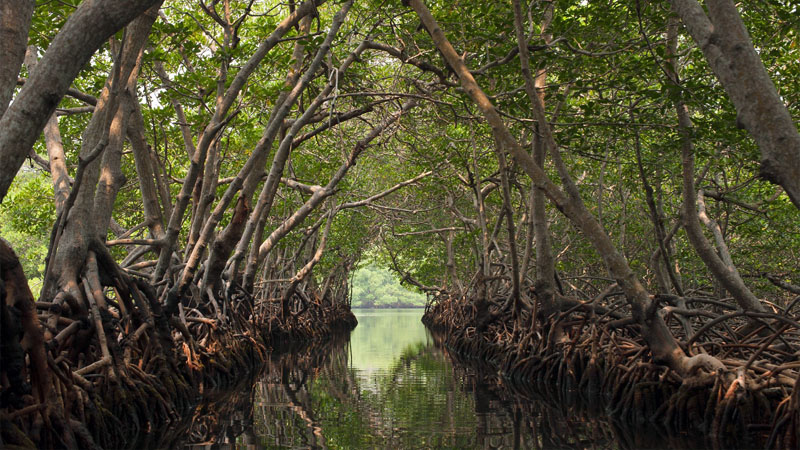Exclusive content

Local authorities in Kendrapara, India, have launched an investigation into allegations of illegal encroachment by a “shrimp mafia” within the Mahakalapada forest range of Bhitarkanika national park. The mafia is accused of illegally converting mangrove forests into shrimp farms, disregarding environmental regulations and local laws.
Illegal Conversions and Actions Taken
Areas in Jogidhanakuda, Saralikuda, Hetamundiua, and several other villages have been affected by these illegal activities. Encroachers have reportedly constructed thatched houses and cleared mangrove trees to make way for shrimp farming, prompting swift action from the Forest department. An FIR has been lodged against the encroachers, signaling a decisive move to reclaim the forest land.
Mr. Sudrashan Gopinath Yadav, the District Forest Officer of Bhitarkanika, affirmed the Forest department’s commitment to combatting illegal encroachments. Plans are underway to evict the encroachers with the assistance of local police and the district administration. Additionally, steps will be taken to restore the affected areas by planting mangrove saplings, thereby reinstating the ecological balance crucial for the region’s biodiversity.
Proposed Eco-Sensitive Zone Aims to Protect Bhitarkanika
In a proactive measure, the Union Ministry of Forests, Environment & Climate Change recently unveiled a draft notification proposing an eco-sensitive zone (ESZ) around Bhitarkanika national park and Gahirmatha marine sanctuary, aiming to safeguard the fragile ecosystem encompassing 209 villages and a population of approximately 275,000 people in Kendrapara district and nearby areas.
The draft notification outlines stringent regulations aimed at preserving the region’s natural resources. Activities such as industrial setups causing pollution, stone crushers, commercial mining, saw mills, shrimp farms, brick kilns, commercial firewood use, and hydroelectric power projects are strictly prohibited within the ESZ. These measures are designed to mitigate environmental degradation and sustain the biodiversity of Bhitarkanika and its surrounding areas.